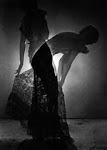Fred Frith - Back to Life (Tzadik 2008)

FRED FRITH
Back to Life
Tzadik 2008
Listen: Back to Life
I've only recently come across Fred Frith, but like similar British improvisational pioneer, Derek Bailey, here's becoming quite a regular on my stereo. Back to Life however, isn't an improvisational album, but a collection of Frith's chamber music over the past few years, and Frith doesn't actually play anywhere on this record. The ensemble is composed of former Kronos quartet cellist, Joan Jeanrenaud, percussionist William Winant, who has worked with some of the great avant-garde musicians of the past from Lou Harrison to Sonic Youth, the pianist Stephen Drury and the Belgian musician Daan Vandewalle.
`Seven Circles' for solo piano has touches of Morton Feldman and John Cage, and there's definitely something abstract and Indeterminate about the playing. As with John Cage's piano works, the spaces in between the notes are often used to add emphasis and define the piece. But the sparse nature of `Seven Circles' isn't really where Frith's talent as a composer lies. His real talent comes to the surface when he's writing for two instruments, and perhaps that's why `Seven Circles' was spread across the album rather than left as a single piece. `Save As' is one of the best pieces on the album, because of the beautiful interplay between the Xylophone and the Cello, which really demonstrates Frith's ability as a composer. It's certainly an unusual combination, but interesting because of the interaction between the short droning movements, careful plucking and cacophonic noises of the cello coupled with the strange playfulness of the percussion. Eventually the piece breaks out into a long, minimal and melancholy section before sinking back into playfulness once again. And playfulness is certainly Frith's forte.
By far the most accomplished and satisfying of the pieces is the title track. Despite being the most conventional, it's also the most beautiful and least dissonant. The oboe remains at the forefront for the majority of the piece, becoming entwined from time to time with the richer notes of the cello for additional depth and the soaring notes of the Arve Henrikson style trumpet for lightness.
The dynamism between light and dark is especially noticeable on on `Bridge is Bridge' as the piece continually shifts from the frantic to the contemplative. The trumpet lifts the piece in a series of sort of medieval-esque moments, making great use of empty space. The repetitive cycle of Winant's percussion forms a strong foundation as the trumpet cries out and the oboe and cello weave their way in and out, softened by the gentle marimba playing. There's a strange wintry feel to these pieces, which is in part due to Frith's most obvious classical influences. There's the occasional break out into Ligeti like `micropolyphonic' percussive flourishes and the polystylistic techniques owe something to Schnittke.
Darkness and the unknown linger across the whole album in a sort of Eastern European, Svankmajer-esque surreal, Alice down the rabbit hole, way. When listening to most of the pieces, I can almost picture Svankmajer's puppet's performing some strange internal journey into their past to recount particularly traumatic events that are simultaneously played out with stop-animation clay effects in the foreground. But that's probably one of my main criticisms of this album - the something extra which seems to be lacking. It's almost as if these works were written with something else in mind, a missing theatrical accompaniment, a contemporary dance etc. The dropping of a ping-pong ball followed by the screeching cello on `Save As' is all well and good if it's used to build up tension in a dramatic scene, but without the scene it doesn't quite have the same effect.
Having said that, there are some striking passages in these works and perhaps all the more striking because of how we reach them. In between the flickering shadows there's a very definite beauty, but it exists briefly as a kind of transient moment that's never truly captured, always lingering just beyond reach. The title Back to Life certainly emphasises the album's dreamlike nature, in a way which implies that it's only when you've reached the end that you've truly returned Back to Life. Rather than a journey through life, it's a journey to life.



0 comments:
Post a Comment